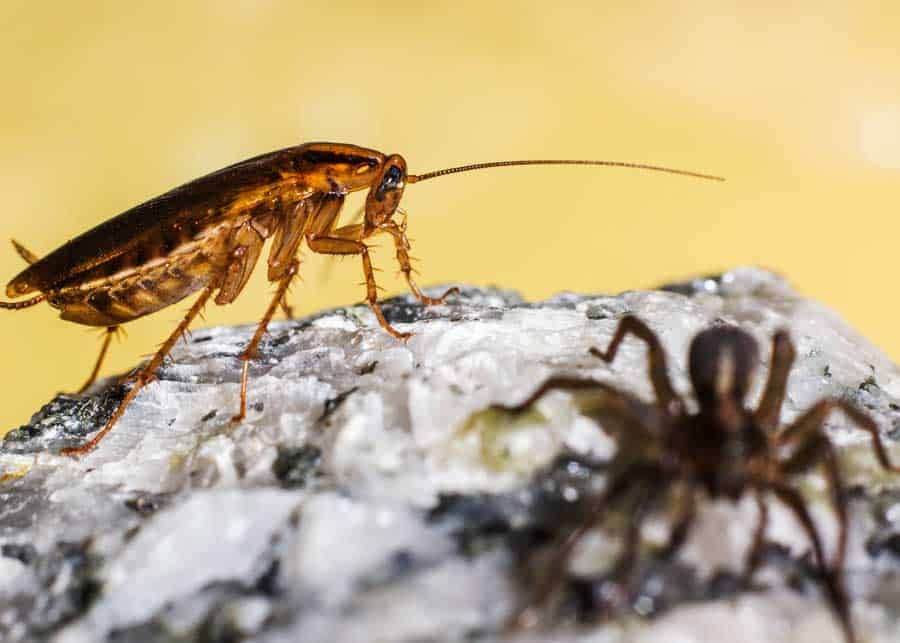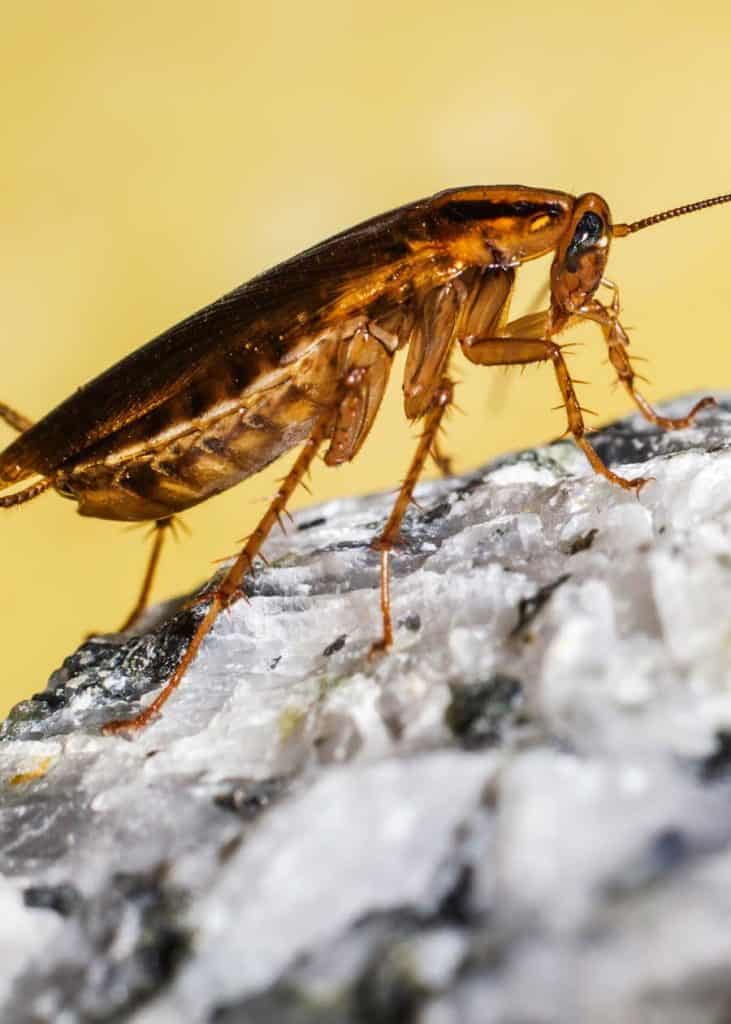Have you ever asked yourself can cockroaches survive a nuclear blast? Ultimately, the answer lies somewhere between “no” and “it’s complicated.”
The myth surrounding the ability of a cockroach to survive a nuclear blast is long-standing. This story has been propagated by media sources, popular culture, and rumors ever since the bombing of Hiroshima and Nagasaki.

When the US dropped the nuclear bomb on Japan in 1945, media reports in the aftermath suggested that cockroaches and other insect life were still thriving in the decimated cities.
But these reports might just be myths. Tilman Ruff, a professor at the School of Population and Global Health and Nobel Prize Laureate, says there is no evidence of the presence of cockroaches after any nuclear bombings.
5 Factors to Consider Cockroach’s Nuclear Survival
Historically, while there’s no evidence to suggest cockroaches could survive a nuke, some isolated studies prove cockroaches have a higher resistance to radiation than humans and can survive exposure longer.
If you want to get technical and examine the possibility of a cockroach surviving a nuke, here are some factors you may need to consider.
1. Proximity
Can a cockroach survive a nuclear blast? To answer that, consider the power of nuclear weapons.
Nuclear explosions are devastating and have a radial reach of 9-18 miles (15-30 km). That means anything within about a 9-mile radius (15 km) will die, and anyone beyond that, up to 18 miles (30 km) can suffer severe burns, radiation poisoning, and be crushed by downed buildings.
Even the heartiest animal won’t survive near the epicenter. Hypothetically, cockroaches near the fringes may be more likely to survive than humans, thanks to their small size and resistance to radiation.
But don’t underestimate the sheer power of a nuclear blast.
Everything within about 3.7 miles (6km) of ground zero, up to two stories high, is subject to 198 US tons (180 metric tons) of force and 158 mph (255km/h) winds.
These numbers quadruple within a 0.67 mile (1km) radius. Aside from the temperatures high enough to instantly cremate and vaporize bodies to their base elements, the mere pressure is enough to flatten entire buildings.
2. Continued Exposure
Another factor to consider is continued exposure. A cockroach may survive the initial blast, but if they continue to live in the irradiated zone, they are more likely to die from cell damage and suffer long-term effects and eventual death.
If cockroaches don’t survive long enough to procreate, they will die off. In the case of a total nuclear apocalypse, cockroaches would have to survive the initial devastation and the long-term radiation effects to continue the species.
We have little to no information on how radiation affects procreation or if the offspring would survive in such a harsh landscape.
In either event, cockroaches are resistant only to a point. The more radiation exposure they get initially, and the more they continue to get after the blast, the less likely they are to survive.
Additionally, while cockroaches are 6-15 times more resistant to radiation than humans, fruit flies are even more resistant.
Without nuclear exposure, here’s how long a cockroach can live.
3. Temperature Extremes
The resulting temperature changes will affect survival.
The blast produces intense heat. And the subsequent nuclear winter produces extreme cold. Temperature extremes are factors in a roach’s survival.
4. Ecological Effects
In the case of a single nuclear explosion or a total nuclear holocaust, cockroaches that survive would have a significantly harder time finding food. They could live for a while off the decaying corpses of humans and animals, but that would eventually run out.
Cockroaches are dependent on other animals for their food. Modern societies are a wonderland for cockroaches, thanks to our abundance of food and shelter.
A nuclear war between the United States and Russia would be enough to instantly plunge the world into a nuclear winter with the debris and smoke that would get tossed up into the atmosphere. Once that happens, most plant and animal life would die off.
“The evidence from a disaster like Chernobyl is that every organism, from insects to soil bacteria and fungi to birds to mammals, would experience effects in proportion to the degree of contamination,” Professor Ruff says.
University of Melbourne
5. Control vs. Case Study
Another major factor to consider is that, realistically, we know very little about the effects of nuclear explosions and nuclear fallout.
Through separate controlled experiments, we’ve learned the radiation levels cockroaches can survive, but we don’t know if that leaves them incapable of procreation and at what level they can withstand while continuing to live without issue.
Through nuclear testing during the Second World War and the Cold War, we know the blast radius and general destructive powers of various nukes, but we don’t know all of their long-term effects or how they affect people and cities. Remember, all but two nukes were tested only in the open desert.
More recently, scientists have discovered Cold War-era nuclear radiation in the Mariana Trench, the deepest place on earth.
In addition to controlled experiments, most of what we know about nuclear fallout is what was learned following the bombings of Hiroshima and Nagasaki. Aside from the obvious disaster, there’s surprisingly little data from those incidents, thanks to the timing of the whole affair and the sheer devastation they caused.
Most of what we know about the extreme effects of radiation on the human body comes from the Tokaimura Nuclear incident in 1999, where doctors kept 35-year-old Hisashi Ouchi alive against his will for 83 days. Needless to say, it wasn’t pretty and no one would want to live like that.
Aside from these isolated cases, we have exceedingly little knowledge of the effects of radiation and nuclear fallout in either controlled or real-life instances.
Did you know that cockroaches can live without their head?

Learn more about cockroaches in our huge Roach Guide.
So, Can a Cockroach Survive a Nuke?
Can a cockroach survive a nuclear blast? Realistically no, a cockroach wouldn’t survive. Being anywhere near the epicenter, exposed to radiation, and losing the entire area’s ecosystem would spell a violent end for any living thing. However, due to a lack of research and evidence and having so many factors at play, it’s possible.
Theoretically, a cockroach could survive a nuke, though it’s very improbable.
- About the Author
- Latest Posts
Bryan Haines is a co-founder and writer at The Buginator. And is working to make it the best resource for taking back the outdoors from biting, stinging pests.
He also blogs about travel at Storyteller.Travel and photography at Storyteller Tech. Bryan is a partner at Storyteller Media, a publishing company he runs with his wife, Dena.
